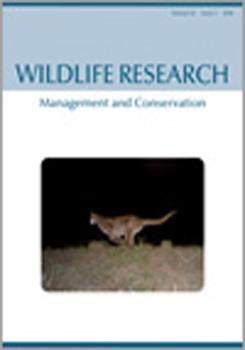Context. Population estimation and monitoring are important tools for the support of programs and actions of conservation for most wildlife species, including birds. For validation of such support, a set of reliable, consistent and comparable parameter estimates is essential (through systematic monitoring over time), in addition to studies on ecological aspects of the species.
Aims. In this study, our aim was to analyse the population of Penelope superciliaris in the Vale Natural Reserve (VNR), located in north-eastern Espírito Santo, Brazil, providing estimates of density, population size and activity. We also analysed occupancy and detectability of the species, relating them to six covariates (distance from forest edge, water and road, as well as poaching intensity, canopy cover and understorey cover) based on previous knowledge of the ecology of rusty-margined guan.
Methods. We used line-transect surveys to estimate density and abundance, and camera traps to estimate habitat use by P. superciliaris, using the occupancy modelling approach.
Key results. Estimated density for P. superciliaris was 2.5 ± 1.0 groups per km2 with a group size of 6.0 ± 2.0 individuals, and estimated population size for the entire VNR was 3544 ± 495 individuals. Occupancy by P. superciliaris was best described by three covariates: (1) distance to road; (2) distance to water; and (3) poaching intensity. Detectability was affected by two covariates: (1) understorey cover; and (2) poaching intensity.
Conclusions. Our results provide the first information on density, habitat use and activity of P. superciliaris in the VNR. We concluded that P. superciliaris is active diurnally, especially during morning and late afternoon, prefers areas near water sources in denser forests and tends to avoid areas with habitat modification and intense poaching activity.
Implications. Our data highlight the impact of poaching on the species and can be useful as a baseline for future studies and Cracid conservation plans.





